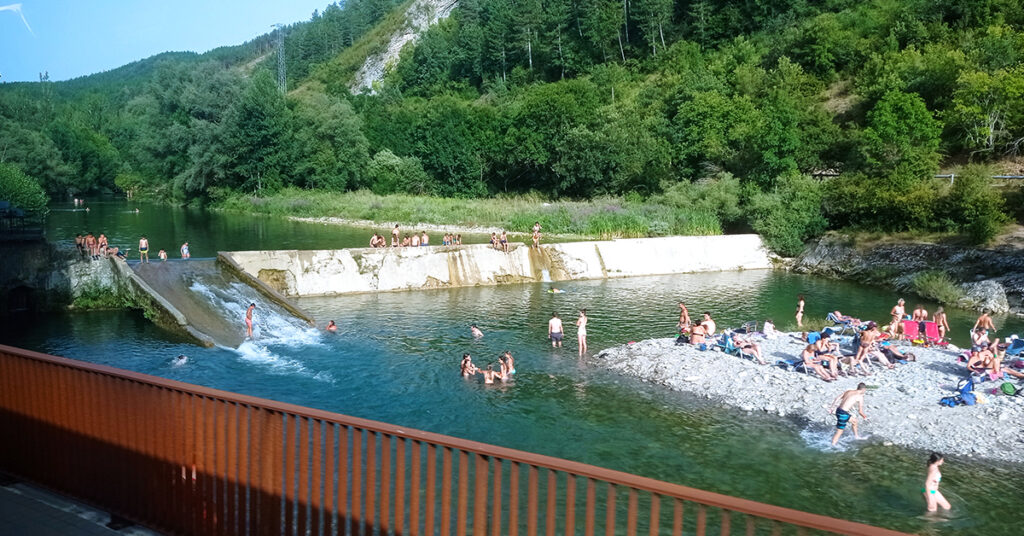Basque ethnography at a glance
The previous article discussed the damage caused by dams in rivers and their relationships with the heritage. Here are some examples:
Some significant examples
The Santa Engracia dam in Pamplona was first documented in the 13th century. It has been in disuse for decades. It was used for different activities, the last of which was for the rubber industry in the 20th century. The River Arga damaged it several years ago and the sheet of water disappeared as a result; the Pamplona rowing club had to stop using it for their sport. That has led to robust discussion. The law requires it to demolished, which was so ordered by the Ebro River Authority and the Government of Navarra’s Ministry of the Environment; but the City Council has called for it to be rebuilt. Its heritage value has been stressed by the parties that wish to rebuild it, but the most appropriate way to show its interior would be precisely to demolish it and display the inner part of one of its ends. From the intangible heritage perspective, the use by the rowing club would obviously not be reason enough.
In Soraluze (Gipuzkoa) – for reasons linked to the urban development at a given time –, the River Deba runs along a canal between the buildings and different dams were built for a variety of activities. The fossilised artificial landscape that this water course has generated in the collective imaginary of the local residents is very robust today. Should the dams be demolished, the River Deba would lose its canal appearance in Soraluze and would take on a limited natural aspect similar to rivers that run through an urban space; but the image inherent to the local identity of recent generations has not been that, but rather that of the canal and the sheet of water. Those dams have no use and the damage they cause to the River Deba is unquestionable.
There is a dam with spillway along which the timber rafts descend in Burgui in the Roncal Valley. The dam is now only used one day a year. That day keeps alive the memory of the transporting of timber that was very important in the past. On the other hand, it is true that all the expertise surrounding the building and use of rafts has thus been transmitted; the reference value of that extinct profession in the imaginary and identity of the town’s population is undeniable. They have set up a Raft Museum and a cultural route known as the Village of Trades, thus fostering cultural and identity tourism. Therefore, the dam continues to be a source of income. Everybody, and particularly the local residents, have to assess to what extent it is worth keeping the dam, taking into account its undeniable damage to the River Ezka and comparing that with the benefit for their wellbeing.
Conclusion
Keeping and not demolishing the disused dam does not offset the damage to the river and the animal life – particularly the fish –in the majority of cases.
The tangible heritage is not usually a compelling argument to keep the dams; the remains of the old mills that may be found there are another matter. However, if keeping the remains of the mills may be costly, keeping a dam without activity is much more.
The ideal would be to analyse each case and reach the relevant conclusions from the intangible heritage perspective. What has to be appraised is the use and identity importance of those dams for the local residents, by gathering their opinion and drawing both quantitative and qualitative conclusions. In many cases, the fossilised landscape embedded in the collective imaginary will prevail, along with the emotional attachment to the place used for bathing and leisure in summer.
Gaizka Aranguren — Labrit


